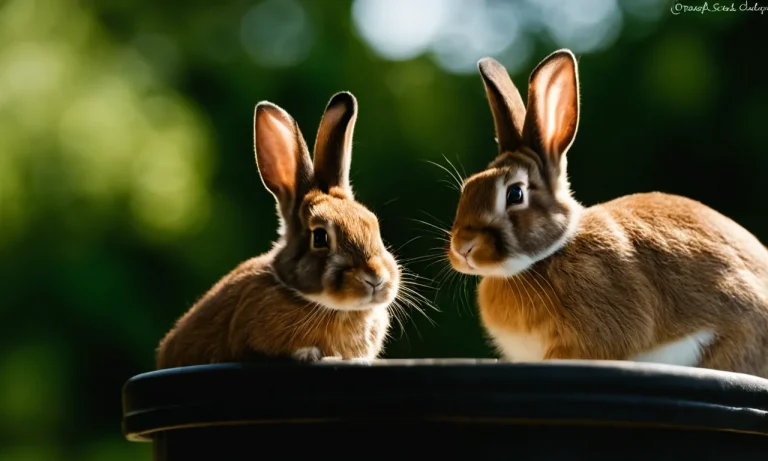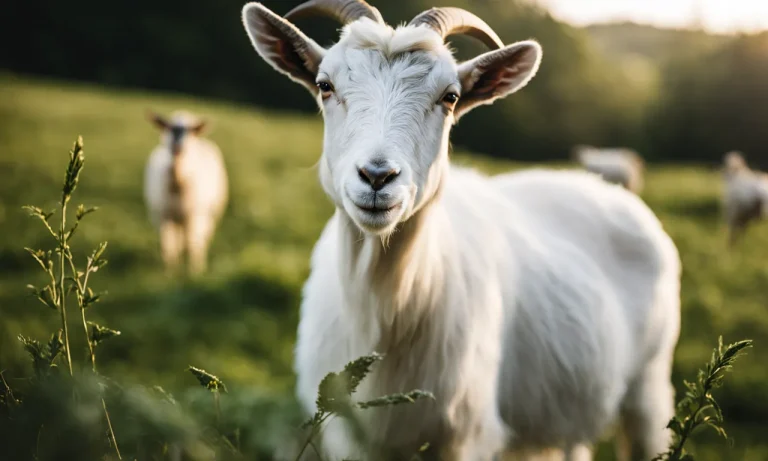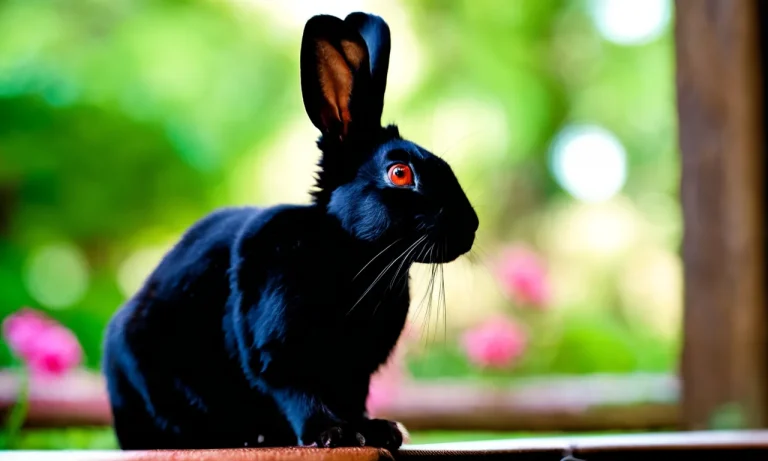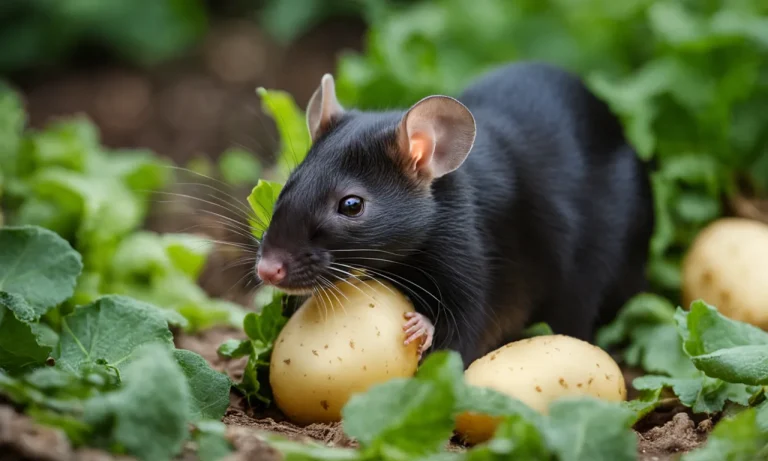If you have ever seen a fluffy, hopping rabbit nibbling on grass or vegetables, you may wonder – is a rabbit a carnivore? The short answer is no, rabbits are herbivores, meaning they only eat plant-based foods.
In this nearly 3000 word article, we will cover everything you need to know to fully understand the rabbit’s dietary classification and why it is considered a herbivore. We will explore the rabbit digestive system, what foods rabbits can and cannot eat, how their teeth are adapted for an herbivorous lifestyle, comparisons to other herbivores and more.
By the end, you will have a complete understanding of the evidence showing that rabbits are obligate herbivores perfectly adapted to consume plant materials.
The Rabbit Digestive System is Structured for Herbivory
Rabbits Have Enlarged Cecum to Ferment Plant Matter
The digestive system of a rabbit is specifically adapted for herbivory. One key feature is their enlarged cecum, which is responsible for fermenting the plant matter they consume. The cecum is a pouch-like structure located at the beginning of the large intestine.
It serves as a fermentation chamber where bacteria break down cellulose and other complex carbohydrates that make up a significant portion of a rabbit’s diet.
The fermentation process in the cecum allows rabbits to extract the nutrients from the plant matter, including essential vitamins and minerals. This adaptation is crucial because plant material is generally difficult to digest due to its high fiber content.
By fermenting the plant matter, rabbits can access the nutrients locked within the cellulose fibers, ensuring their dietary needs are met.
Cellulose-Digesting Bacteria Allow Rabbits to Extract Nutrients
Rabbits rely on symbiotic relationships with bacteria in their digestive system to digest cellulose. These bacteria, known as cellulolytic bacteria, produce enzymes that break down cellulose into simpler sugars that can be absorbed by the rabbit’s digestive system.
This cooperative relationship allows rabbits to access the energy stored in plant material that would otherwise be indigestible to them.
The cellulose-digesting bacteria are present in the rabbit’s cecum, where they work in harmony with the rabbit’s own digestive enzymes to break down the plant matter. This unique adaptation sets rabbits apart from carnivores, which lack the necessary gut bacteria to efficiently digest cellulose.
It further supports the claim that rabbits are indeed herbivores.
Salivary Glands Produce Enzymes to Begin Breaking Down Fiber
Another key aspect of a rabbit’s digestive system is the production of enzymes in their salivary glands that aid in breaking down fiber. These enzymes, such as amylase, begin the process of breaking down complex carbohydrates found in plant material.
The action of chewing and mixing the food with saliva helps to initiate the breakdown of fiber, making it easier for the digestive system to extract nutrients.
By producing specific enzymes to tackle the unique challenges of a plant-based diet, rabbits demonstrate their adaptation to herbivory. This further emphasizes that rabbits are not carnivores but are well-suited for consuming and extracting nutrients from plant matter.
A Rabbit’s Teeth Indicate a Strict Herbivorous Lifestyle
When it comes to determining the dietary habits of rabbits, their teeth provide a clear indication that they are strict herbivores. Rabbits have a unique dental structure that is specifically adapted for consuming plant-based foods.
Incisors are Specialized for Clipping Vegetation
One of the key features of a rabbit’s dental anatomy is their prominent incisors. These front teeth are long and sharp, perfect for clipping vegetation. Rabbits use their incisors to efficiently slice through grasses, leaves, and other plant materials.
In fact, these incisors can grow up to 5 inches per year, ensuring that rabbits are always equipped with sharp cutting tools.
Molars Grind Tough Plant Foods
In addition to their incisors, rabbits also have a set of molars at the back of their mouths. These molars are specially designed for grinding tough plant foods. Unlike humans who have flat molars, a rabbit’s molars have a ridged surface that helps break down fibrous vegetation.
This allows rabbits to extract the maximum amount of nutrients from their diet.
No Canine Teeth for Tearing Flesh
Unlike carnivores that have prominent canine teeth for tearing flesh, rabbits lack these specialized teeth. Instead, rabbits have a gap between their incisors and molars, which is an adaptation suited for their herbivorous diet.
This gap, known as a diastema, allows rabbits to easily manipulate and chew plant foods without the interference of sharp canine teeth.
So, while rabbits may have sharp incisors, their dental structure and lack of canine teeth clearly demonstrate that they are not carnivores. Instead, they are well-equipped for a herbivorous lifestyle, relying solely on plant-based foods for their nutritional needs.
For more information on rabbit anatomy and dietary habits, you can visit The Spruce Pets.
Rabbits Eat a Diet Consisting Entirely of Plants
Contrary to popular belief, rabbits are not carnivores. In fact, their diet is exclusively plant-based, making them herbivores. Rabbits have a unique digestive system that allows them to efficiently extract nutrients from plant material.
Grasses and Leafy Greens Provide Staple Foods
The primary food source for rabbits is grass. They have a natural inclination to graze on various types of grasses, which provide them with essential nutrients such as fiber, vitamins, and minerals. In the wild, rabbits spend a significant amount of time foraging for fresh grass to satisfy their nutritional needs.
In addition to grass, leafy greens are also a staple in a rabbit’s diet. These include vegetables like lettuce, kale, and spinach. Leafy greens offer a variety of vitamins and minerals that contribute to a rabbit’s overall health.
Fruits and Vegetables Offer Additional Nutrients
While grass and leafy greens form the foundation of a rabbit’s diet, they also enjoy consuming fruits and vegetables. These treats provide additional nutrients and add variety to their meals. Some fruits that rabbits can safely consume include apples, berries, and melons.
When it comes to vegetables, options like carrots, bell peppers, and broccoli are popular choices.
It’s important to note that fruits and vegetables should be given in moderation, as an excessive amount can lead to digestive issues. A balanced diet with the right proportions of each food group is crucial for a rabbit’s well-being.
A Well-Balanced Herbivorous Diet for Optimal Health
To ensure a rabbit’s optimal health, it is essential to provide a well-balanced herbivorous diet. This includes a mix of grass, leafy greens, fruits, and vegetables. Offering a variety of food options not only keeps rabbits physically healthy but also mentally stimulated.
It’s important to consult with a veterinarian or a rabbit care specialist to determine the specific dietary needs of your pet rabbit. They can provide guidance on portion sizes, food combinations, and any specific dietary restrictions that may apply.
Remember, a rabbit’s diet should consist entirely of plants. By providing the right mix of foods, you can help your furry friend thrive and lead a happy, healthy life.
Rabbits Cannot Safely or Efficiently Digest Meat
Contrary to popular belief, rabbits are not carnivores. In fact, their digestive systems are not adapted to process meat efficiently or safely. While rabbits are herbivores by nature, some may wonder if they can handle a diet that includes animal products.
However, research suggests that feeding rabbits meat can lead to gastrointestinal issues and other health problems.
Gastrointestinal Issues from Consuming Animal Products
Rabbits have a unique gastrointestinal system that is designed to process high-fiber, plant-based diets. Their digestive tracts are optimized for breaking down cellulose, the main component of plant cell walls.
When rabbits consume meat or other animal products, their digestive system can struggle to handle the high levels of protein and fat. This can result in gastrointestinal issues such as diarrhea, bloating, and discomfort.
According to the House Rabbit Society, a nonprofit organization dedicated to rabbit welfare, feeding rabbits a diet high in animal protein can disrupt the delicate balance of bacteria in their gut. This imbalance can lead to digestive problems and may even put the rabbit’s overall health at risk.
Lack of Adaptations to Process High-Protein Foods
Rabbits lack certain adaptations in their digestive systems that are commonly found in carnivorous animals. For example, rabbits do not have sharp, carnivorous teeth designed for tearing meat. Instead, they have evolved to have specialized teeth for grinding fibrous plant material.
Furthermore, rabbits have a relatively long gastrointestinal tract, which allows for the slow and efficient digestion of plant matter. This extended length of the digestive system is not well-suited for digesting meat, which tends to putrefy quickly in the digestive tract.
This can lead to discomfort and potential health issues.
Comparison to Other Herbivorous Mammals
Cow’s Digestive System Also Specialized for Plant Foods
When comparing a rabbit’s dietary habits to other herbivorous mammals, it is interesting to note the similarities and differences. One notable comparison can be made with cows, which are well-known herbivores.
Just like rabbits, cows have a specialized digestive system that allows them to efficiently break down plant material. Their stomachs consist of multiple chambers, including the rumen, which acts as a fermentation vat for the breakdown of cellulose.
This allows cows to extract nutrients from plant matter that would otherwise be indigestible.
For more information on cows’ digestive system, you can visit the website of the Beef Cattle Research Council.
Horses Have Similar Dental Structure and Dietary Needs
Another herbivorous mammal that shares similarities with rabbits is the horse. Horses possess a similar dental structure to rabbits, with both having elongated incisors and a gap between their front teeth and molars. This adaptation allows them to efficiently grind down fibrous plant material.
Additionally, both rabbits and horses have a similar dietary requirement for high-fiber foods to keep their digestive systems healthy and functioning optimally.
If you want to learn more about the dental structure of horses, you can check out the website of the American Association of Equine Practitioners.
Herbivorous Rodents Share Key Digestive Adaptations
Rabbits also share digestive adaptations with other herbivorous rodents. Rodents like guinea pigs and chinchillas have a similar digestive system, characterized by a large cecum. The cecum is an enlarged pouch located between the small and large intestine, which acts as a fermentation chamber for the breakdown of plant material.
This allows these rodents to extract as many nutrients as possible from their plant-based diet.
If you’re interested in learning more about the digestive adaptations of herbivorous rodents, you can visit the website of the National Center for Biotechnology Information.
Conclusion
In summary, overwhelming evidence shows that rabbits are obligate herbivores. Their digestive system, teeth structure and natural diet are all optimized for consuming fibrous plant foods, not animal meats.
While rabbits cannot properly digest meat, they have evolved a specialized gastrointestinal tract filled with cellulose-digesting bacteria that allows them to thrive on a vegetarian diet.
So next time you see a rabbit nibbling away at your garden, remember – its herbivorous nature drives it to forage for those tasty greens. The rabbit is perfectly adapted to get all the nutrition it needs, not from beef or chicken, but from nature’s plant bounty.






